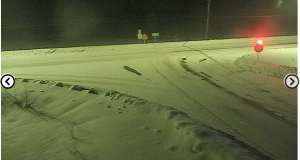Wet conditions continued across the Lake Michigan-Huron basin in June and resulted in water levels rising to record highs by the end of the month. Conditions were relatively drier in the Lake Superior basin, but Lake Superior remains above record high water levels for this time of year.
As a result, there is a much-increased risk of shoreline erosion, lakeshore flooding and coastal damages across the upper Great Lakes system. The Board advises all those that may be affected to prepare for potentially severe coastal impacts, especially during periods of strong winds and high waves.
Lake Superior water levels increased 3cm last month, while the average water level rise in June is 8cm. At the beginning of July, Lake Superior is 4cm above the record-high beginning-of-month level set in 1943. The level is currently 36cm above average (1918 – 2018) and 25cm above its level of a year ago.
Lake Michigan-Huron rose 10cm in June, which is 4cm higher than the average water level climb of 6cm in June. Lake Michigan-Huron is currently equal to the record-high beginning-of-month level set in 1986. The level is 79cm above average, and 35cm above last year’s beginning-of-July level. Lakes Superior and Michigan-Huron are expected to continue their seasonal rises in July.
The International Lake Superior Board of Control (Board) expects the total flow in July to be 3,170 m3/s, which is 300 m3/s above the amount prescribed by Lake Superior Regulation Plan 2012. Actual outflows may vary depending on hydrologic conditions, as well as maintenance activities at the hydropower plants on the St. Marys River. The gate setting at the Compensating Works will be maintained at the equivalent of six gates fully open.
In late July, Gates #7 through #9 will be temporarily closed to facilitate concrete repair at Gate #8. The average St. Marys Rapids flow in July is expected to be approximately 993 m3/s. Anglers and other users of the St. Marys Rapids need to be cautious of the high flows and water levels that will continue to be experienced in the rapids in July.
The Board received approval from the International Joint Commission (IJC) to temporarily deviate from Regulation Plan 2012 through November 2019. This deviation strategy is similar to those employed over the past four years, which were also marked by reduced hydropower capacity and high lake levels and outflows.
Over the next several months, the Board expects to adjust the gate settings at the Compensating Works in order to offset the effects of maintenance activities that are expected to continue through the summer and fall.
Over this time period, the total amount of water released through the St. Marys River will be approximately equal to the flow prescribed by Plan 2012 and the deviation strategy will have almost no impact on the water levels of Lake Superior and Lake Michigan-Huron, yet will provide benefits to the St. Marys Rapids directly downstream of the Compensating Works.
- Ladies Curling Standings – December 18th - December 18, 2025
- Robinson Huron Waawiindamaagewin hosted The (Un)Making of Métis Claims in Ontario - December 17, 2025
- Confederation College Launches Canerector Foundation Scholars Program to Support Skilled Trades Students - December 17, 2025
 Wawa-news.com You can't hear the 'big picture'!
Wawa-news.com You can't hear the 'big picture'!

